Fortunately, the undercooked DSP cable isn’t required for the May to sound brilliant.
- Neutral to mild v-shaped voicing
- Great technical performance
- Comfy enough to wear for a full day
- The DSP allows for easy retuning
- The cable is very well-made
- The app requires excessive access privileges and is quite buggy
- DSP cable emits a low-level glitch whenever the audio stops
- Sometimes the treble can sound a bit disjointed
- Can be a bit midbass light at times
Call me old-fashioned or paranoid, but in my opinion, removing the smartphone’s 3.5mm jack was less of a loss and more of a robbery. We were promised a better battery life due to the extra space it would free up and better ingress protection. In reality, it just lets the manufacturers earn a few cents more.
USB-C terminated earphones allow almost every modern smartphone out there to run a pair of wired headphones. With fancy DSP processing chips, the manufacturers can tune their offerings closer to their definition of sonic perfection. And it allows the listeners to mold the sound to their preferences with just a few swipes of the finger.
The Moondrop May are the industrious company’s third foray into DSP earphones. Previously, the JIU and Quarks featured a DSP-equipped DAC/Amp cable. The all-new May are their mid-market entry into DSP-enhanced IEMs.
Let’s see how they do, shall we?
Unboxing and First Impression
Design and Build
It’s Moondrop at its finest – the May look nice, feel nice, and there’s no paint to chip off. I just hope the ear shell halves don’t come apart anytime soon.
The ear shells are made from two parts – the faceplate and the resin bottom section. The faceplates are metal with laser-etched plum flower patterns. As for the resin shell, the material is dark and semi-transparent with a matte surface finish.
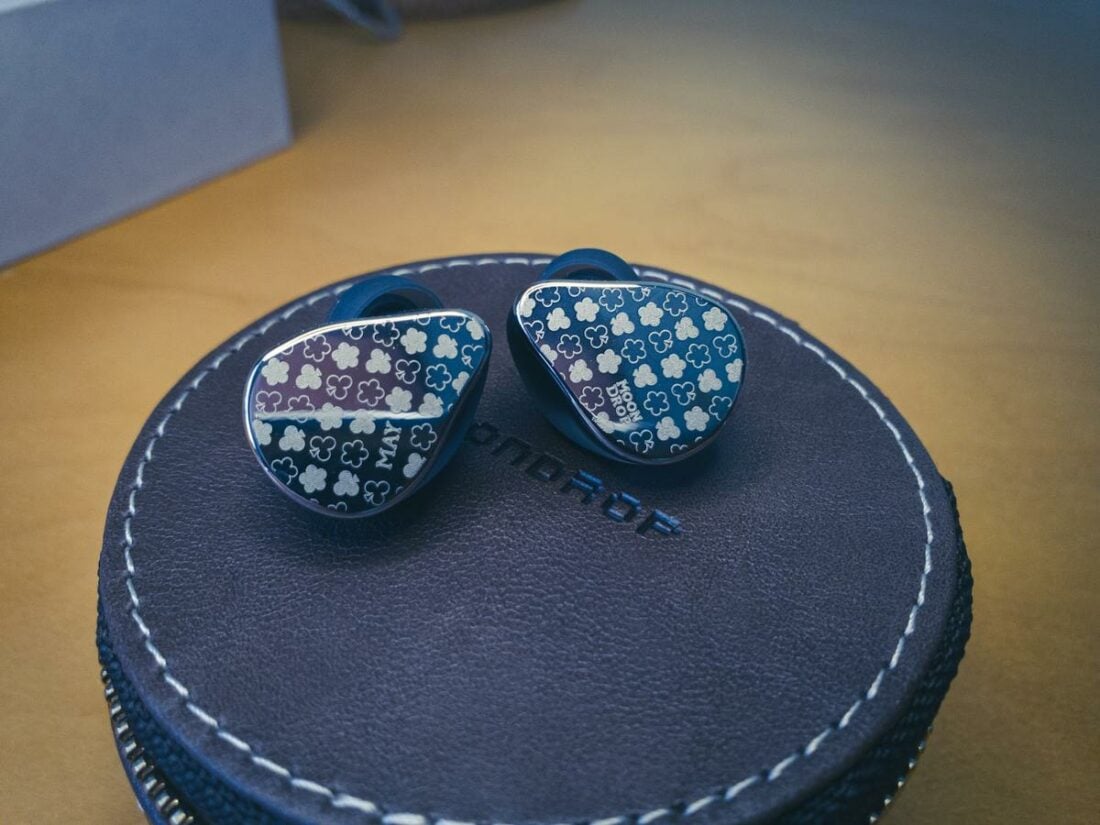
Slipping the ear tips on is a bit of a nightmare because the matte finish extends to the nozzles. Either the ear tips are too small, or the retaining lip is too wide – I spent almost half an hour wrestling them on.
Cable
The actual cable that comes with the Moondrop May is almost identical to the one supplied with the Aria 2. I like it a lot, and it wouldn’t look out of place with IEMs costing ten times more.
What makes the May an exciting package is that the cable houses a dongle DAC/Amp inside the USB-C connector. I couldn’t figure out what chipset this device uses, but it seems competent at driving the May IEMs to a decent volume.
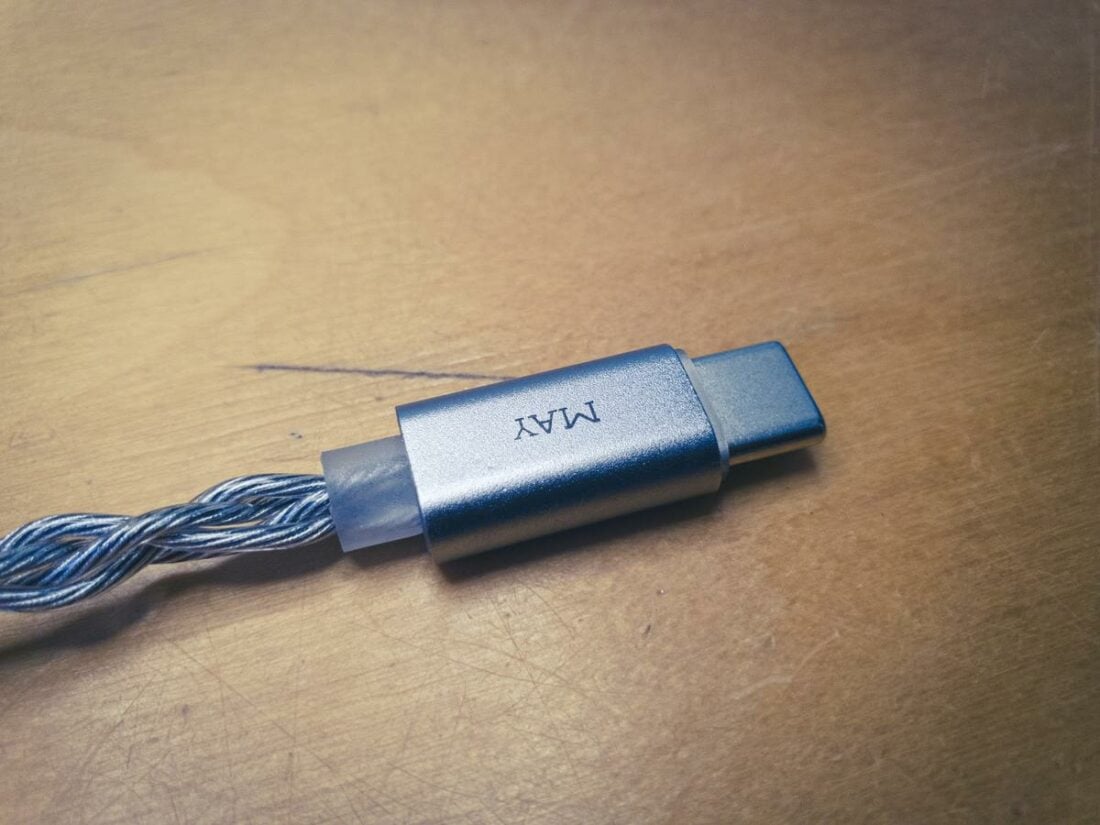
My main problem with the cable electronics is that they emit a short, low-level 1kHz whine whenever the audio stops.
It wasn’t unbearable with music, but when talking to someone via Whatsapp or Zoom, the whine occurs between each phrase. I hope Moondrop fixes this in the future.
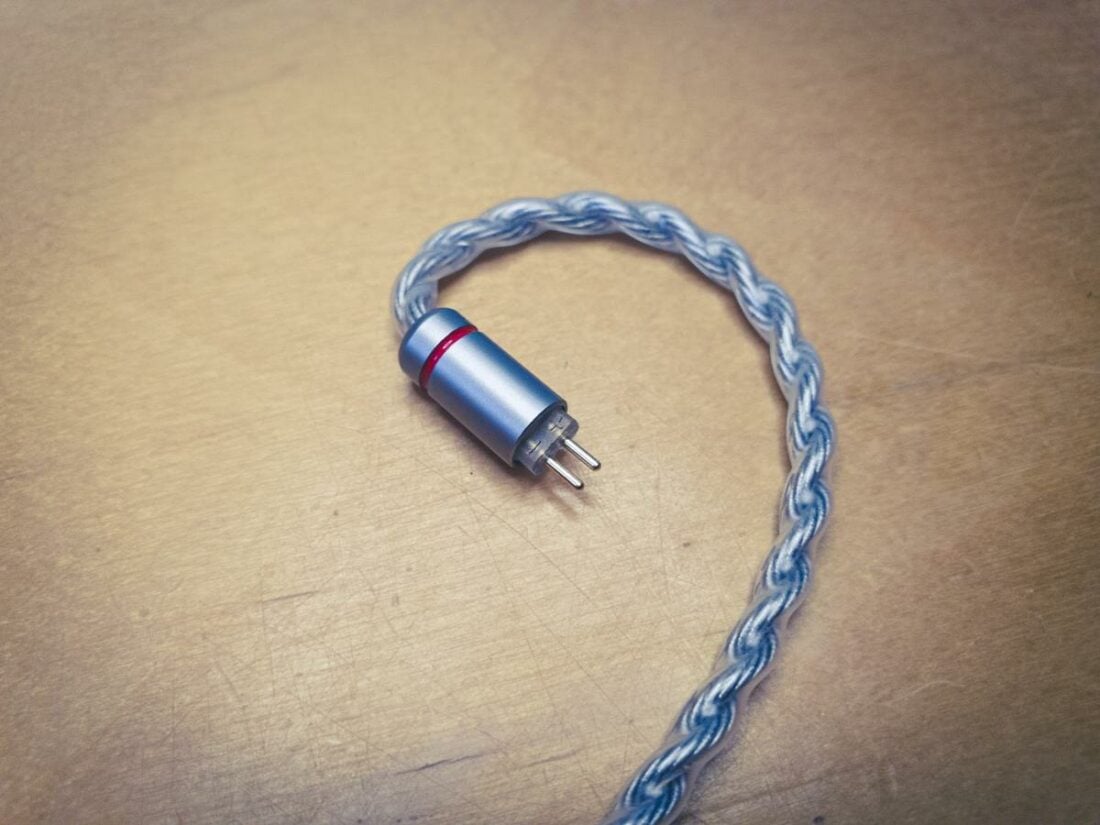
Comfort
The Moondrop May have relatively lightweight and well-designed earshells. I have no problem with having these IEMs in my ears for hours on end. There is a bit of driver flex upon insertion, but I don’t find it too bothersome. Job well done, Moondrop!
Controls
The cable on the Moondrop May has an inline microphone with the usual three-button controls – volume up, volume down, and the multi-function middle button. One press on the middle button answers calls and pauses music. Double presses skip songs and reject calls.
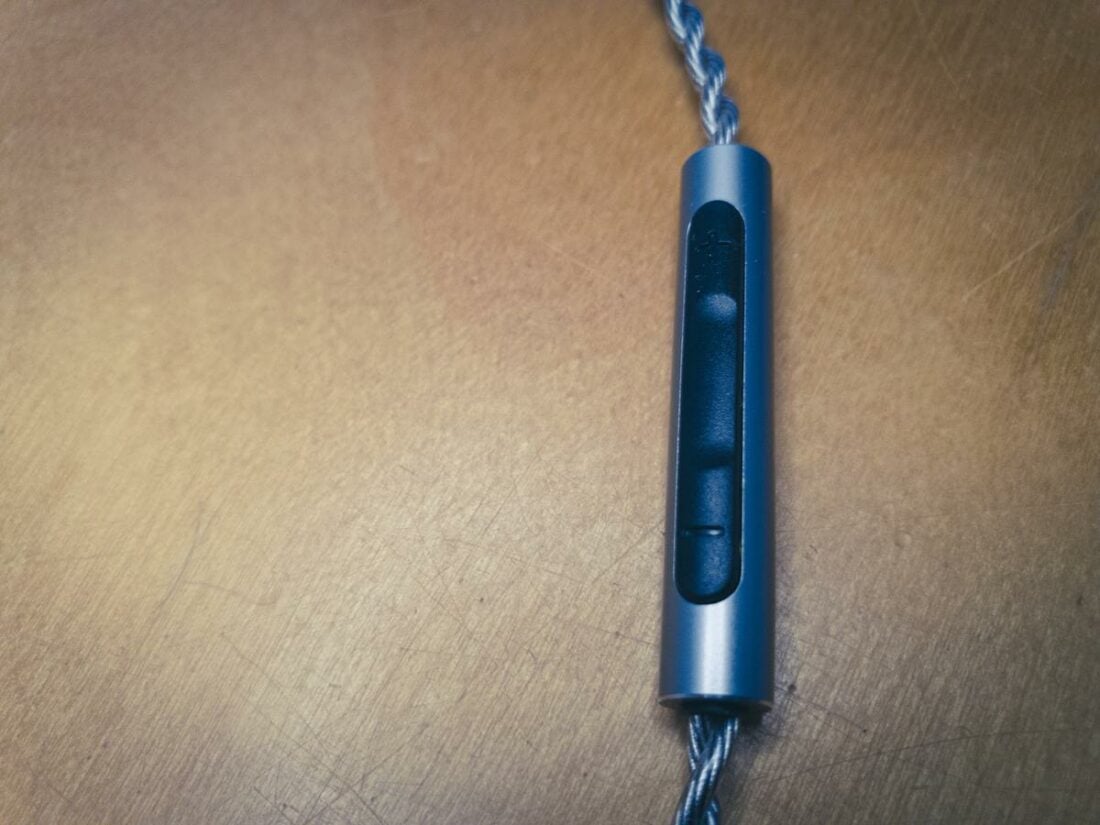
App
To use the Moondrop May’s DSP functionality, one must install the Moondrop Link app. It can be found on the App Store for iOS devices and on the Moondrop webpage for Android.
I ended up using the Android app on my smartphone, and sadly, it’s a bit of a mess.
First off, the app wants me to grant it access to location services and personal media like photos. Why does controlling a USB audio device require these access privileges? If I decline, the app won’t let me control the DSP, but the DAC will still function fine.
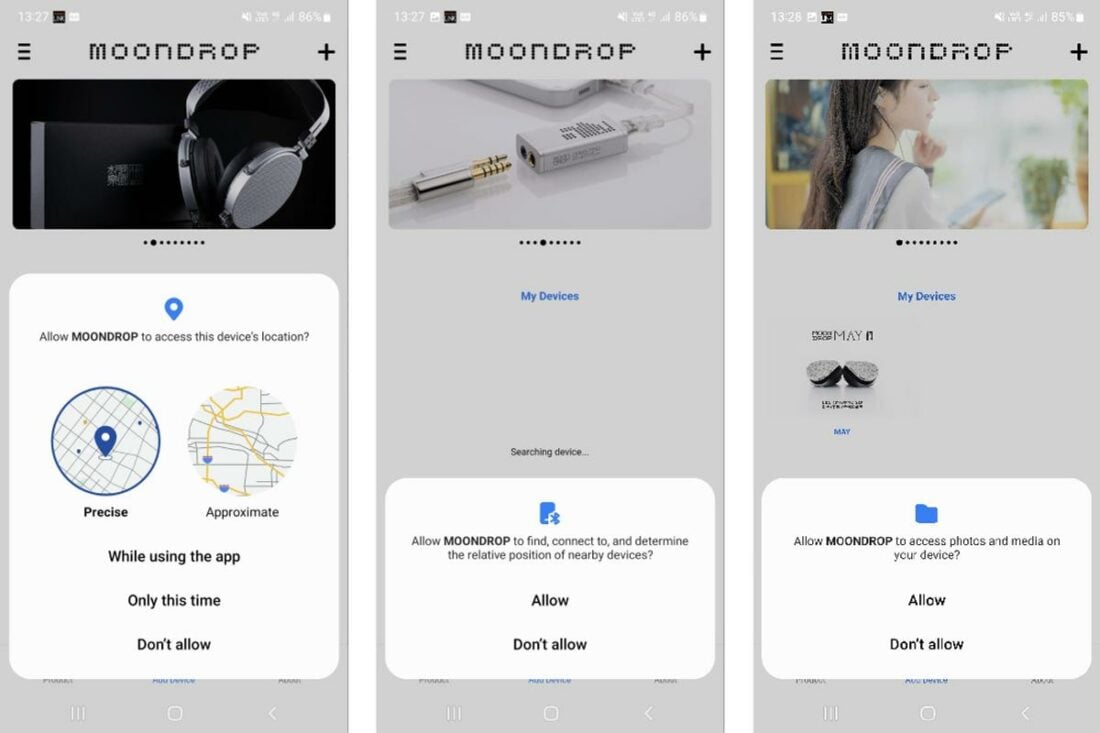
Upon further inspection, access to photos is needed to import DSP configurations. Then, it would be more appropriate to ask for access rights only when I use that feature. I can store and publish my custom DSP settings for others to try out via the app.
Seems like a handy feature, at least at first.
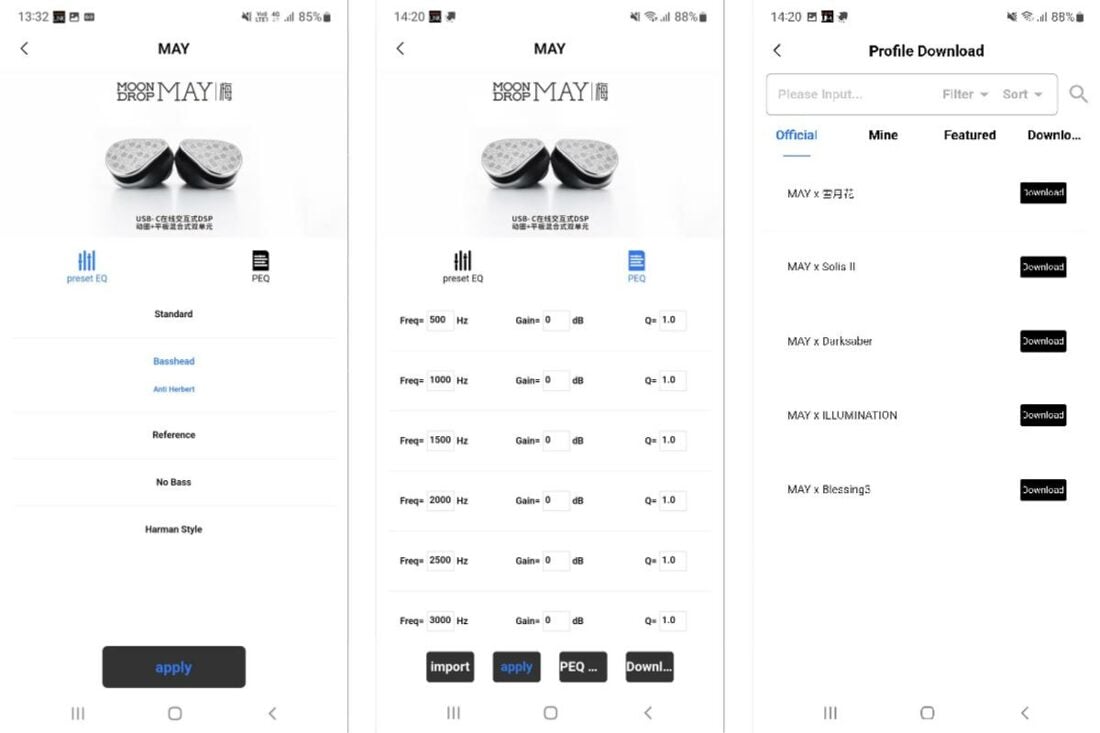
The problem is that the DSP is limited to only the 40hz – 10kHz range. I recommend only using it for subtractive EQ, as there isn’t enough analog gain to compensate for boosting. With that said, the nine available parametric EQ bands are enough to fix many issues.
On top of the user-configurable DSP, the May have five factory DSP presets:
- Standard – no correction applied
- Basshead – elevated low-end
- Reference – Moondrop’s own VSDF target
- No Bass – no bass shelf
- Harman – conforms to Harman 2019 IEM target
After selecting the preferred target, the May instantly changes the tuning, and after pressing “apply,” the DSP config gets written into the chipset. That way, the DSP persists on the device, even if the app isn’t present.
I will also add that the app requires an internet connection and is prone to failing to detect the cable.
The Moondrop Link app needs fixing. Badly.
Under the Hood
The Moondrop May are curious hybrid IEMs that combine a 10mm dynamic driver for most of the audible range and a 6mm annular planar magnetic driver for frequencies over 8kHz. The dynamic driver features a sapphire-plated diaphragm for extra stiffness. There’s little info about the planar driver other than that “annular” means it’s round.
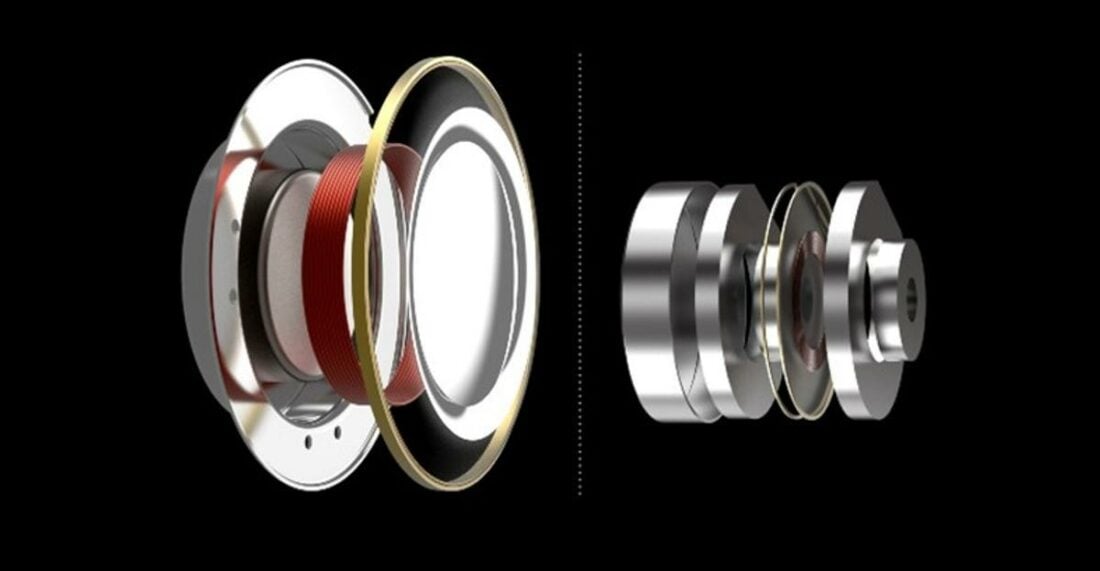
If, like me, you elect to drive the May from another audio source, you will find the electric load a benign 30 ohms with a healthy 120dB/V sensitivity, translating to 104.8dB/mW efficiency. The May can be driven by just about anything out there with little to no danger of noise issues.
How Do the Moondrop May Sound?
The DSP cable adds a good bit of versatility to the Moondrop May. However, it didn’t end up being my preferred way of using the IEMs.
After looking at some measurement sets, it’s evident that the default DSP setting attempts to do some corrections. But I don’t find them critical enough.
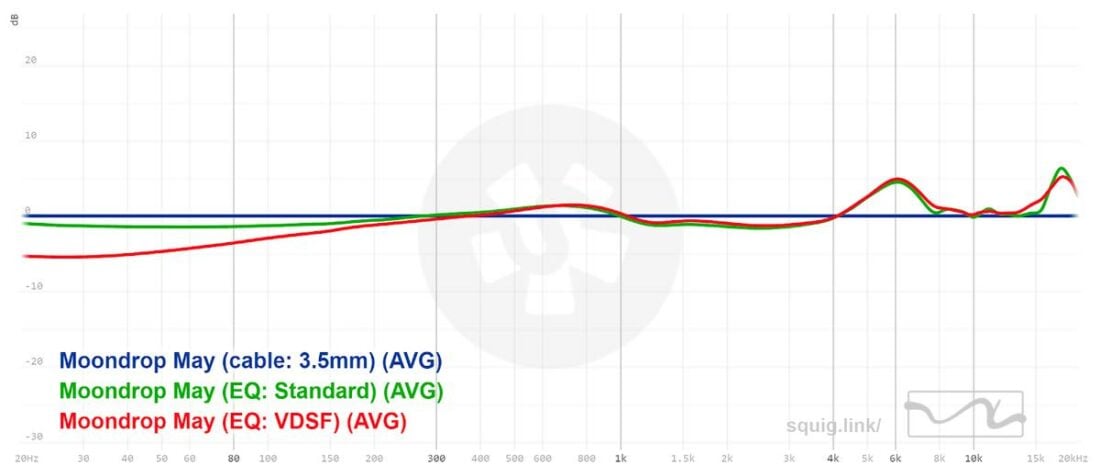
Bass
As usual with most IEMs these days, the May exhibit a pronounced low-frequency shelf that starts at around 150Hz. The low end perfectly extends into infrasound and works wonders with electronic music.
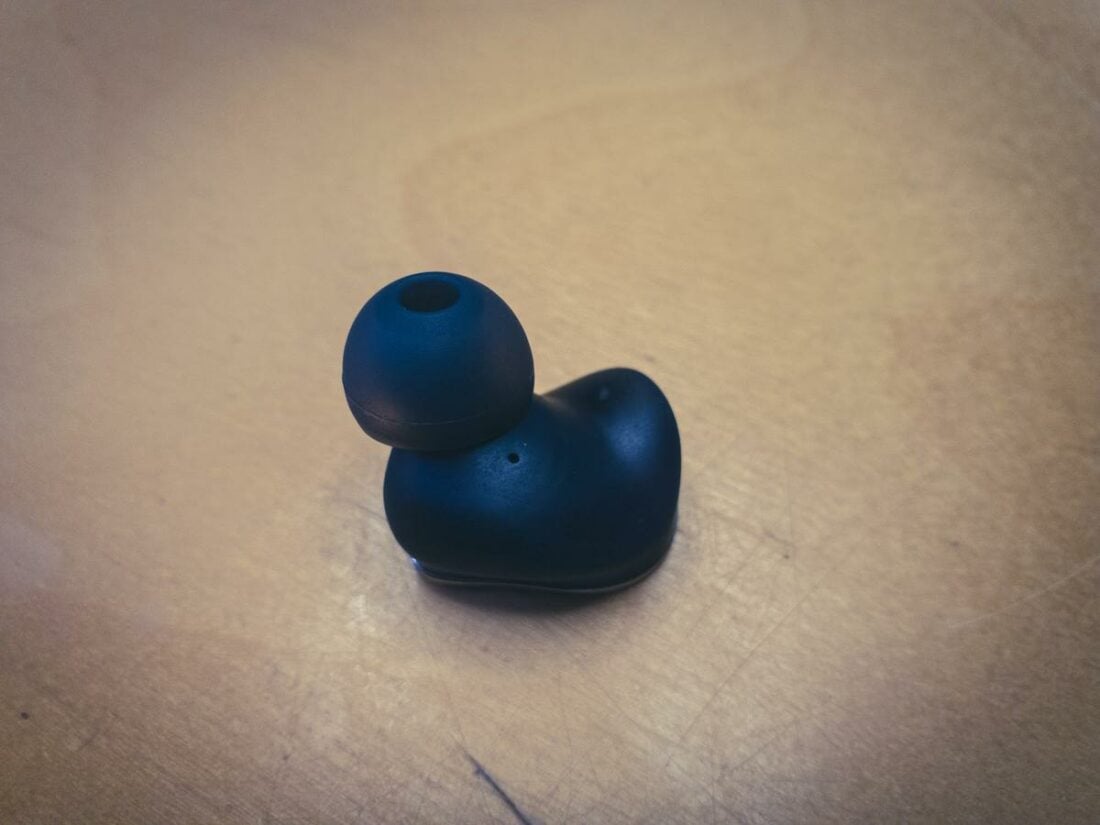
Luckily, there’s enough resolution so that more textured bass doesn’t get smeared. There might not be enough mid-bass for genres like rock and others with physical drums. But that’s just nit-picking – the midbass is very much in line with the popular tuning targets.
Midrange
Due to the slight U-curve tuning, the mids can sound a tad recessed; however, the May have enough resolution to offer a very engaging listening experience. The new sapphire-plated driver seems very capable and offers unusually high technical performance.
The upper mids usually is a troublesome area with many IEMs, but the Moondrop May offer a pretty shout-free sound there. It makes for an unfatiguing listening experience and keeps these IEMs in my ears for hours.
Treble
Due to the annular planar driver, the treble is May’s standout feature.
Even though the planar tweeter takes over at 8kHz, the top octave performance boosts imaging, sound staging, and detail to a level usually found in higher-end IEMs. The treble is well-delineated, resolving, and ethereal – it reminds me most of electret driver designs.
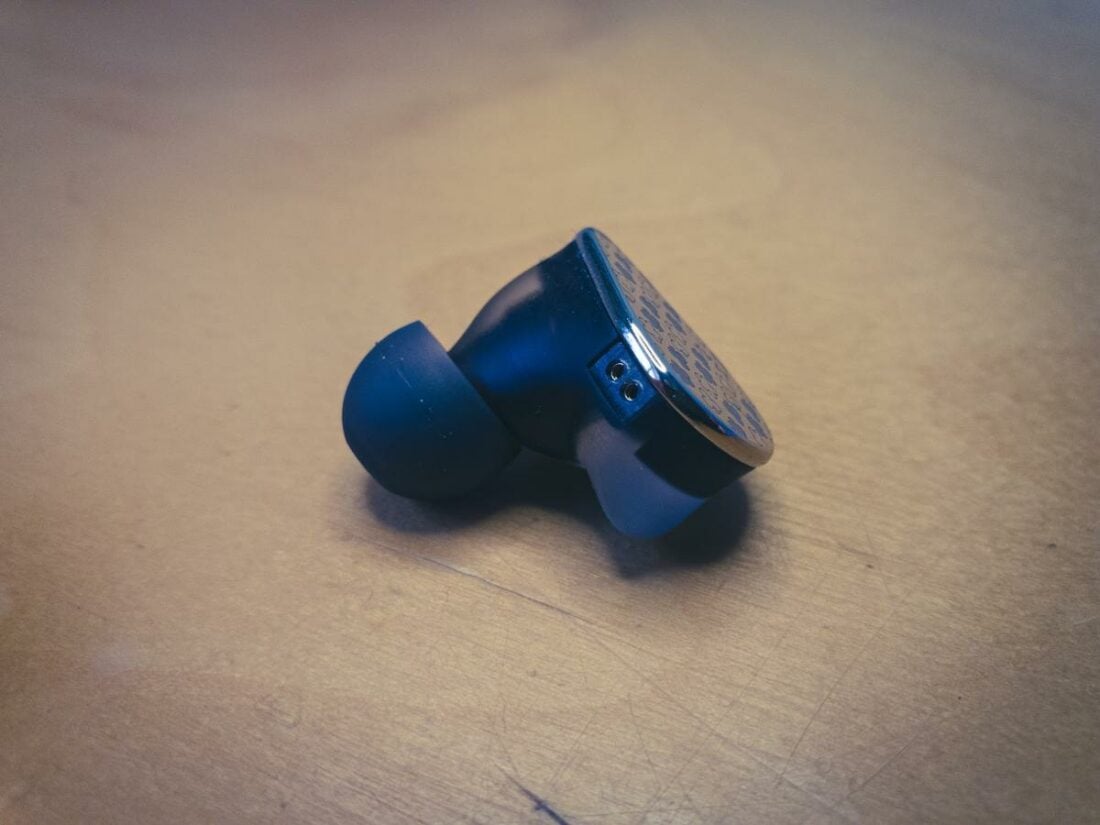
My only reservation is that you can really tell that a different type of driver does the high frequencies.
Coherence is something that suffers in many hybrid and tribrid IEMs, and here it’s no different. It’s not annoying or anything – just something that stands out compared to single-driver IEMs.
Comparisons
In my opinion, the Moondrop May are a safe buy in their price category. Things get tricky when we compare them to their sister product – the Aria 2. The Aria 2 feel more substantial on the build quality front, but generally, both are in the same league.
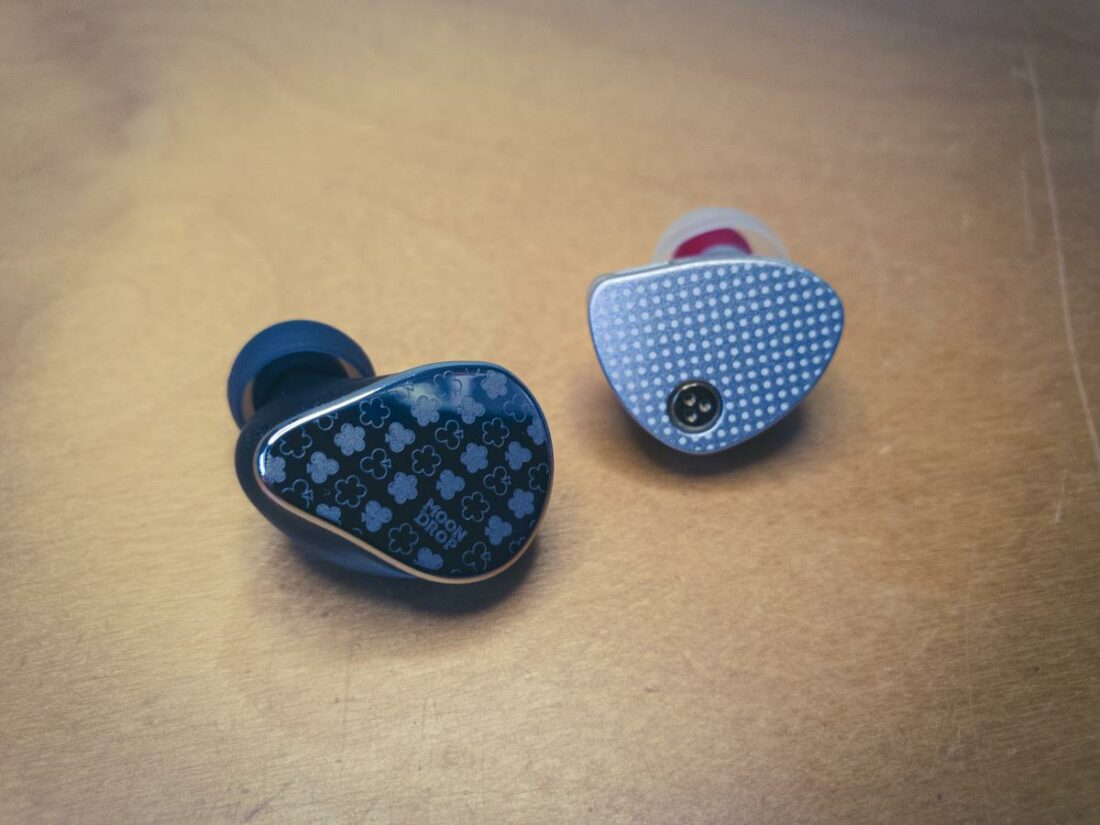
In terms of sound, they trade blows. The Aria 2 are more midbass-oriented and deliver that single-driver coherency many are after. They really shine for rock, metal, and other genres with real instruments. Where the Aria 2 fall short is in technicalities, especially if the stock ear tips are used.
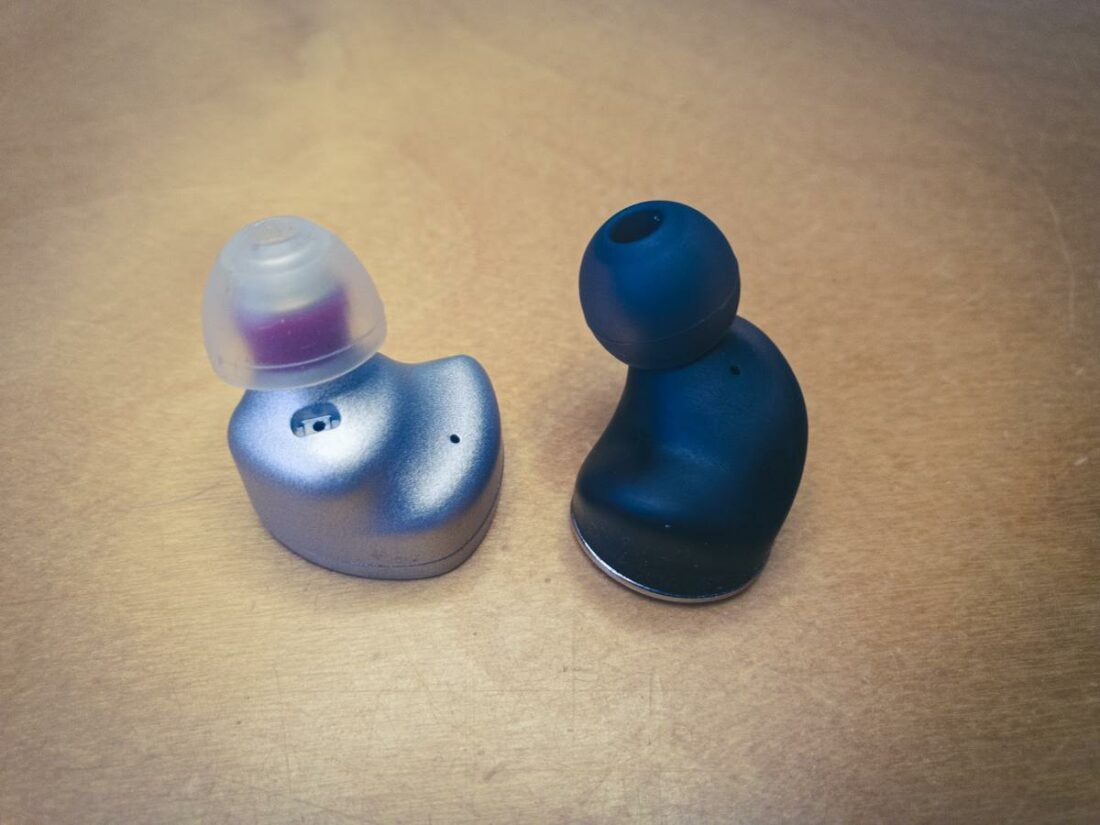
The Moondrop May are the polar opposite. They are more U-tuned and technically proficient, likely due to their super-tweeter. To me, they feel more universal. The way they reproduce detail and recording ambiance makes them a joy with jazz and classical. The more sub-bass-oriented shelving shines with electronica.
Where to Buy
Who Should Buy This?
Whoever can afford them and has a spare 3.5mm to 0.78mm 2-pin cable. If Moondrop can fix the DSP cable, then the May are a terrific package. As they are, most listeners will be better served by replacing the cable and plugging the May into a high-quality audio source.
Final Thoughts
I was intrigued when I heard about Moondrop releasing their next DSP-assisted IEMs. Intrigue turned to disappointment when I encountered the cable’s issues.
Luckily, the May surprised me by needing no fancy digital assistance to sound great! This also softened my disappointment with the included DSP cable. With smart future updates, the cable’s gremlins can hopefully be exorcised, and the cable made into a great addition to these already superb IEMs.
I am hopeful about the future of DSP-assisted wired IEMs. And I’m glad that Moondrop didn’t skimp on fundamental performance with the May. They’re transparent enough to show why high-quality audio sources matter.
What’s in the Box?
- Moondrop May IEMs
- USB-C DAC/Amp/DSP cable
- Paperwork
- Silicone tips – S/M/L
- Leather case
Technical Specifications
- Form: IEM
- Driver: 1x platinum-plated diaphragm dynamic driver, 1x annular planar driver
- Impedance (Ohm): 30ohm
- Sensitivity (dB): 104.8dB/mW or 120dB/V
- Weight (g): 4g
- Frequency Response (Hz): 20 Hz – 20 KHz
- Removable Cable: Y
- Source Jack: USB-C
- Cup/Shell Jack: 0.78mm, 2-pin
- Mic: Y
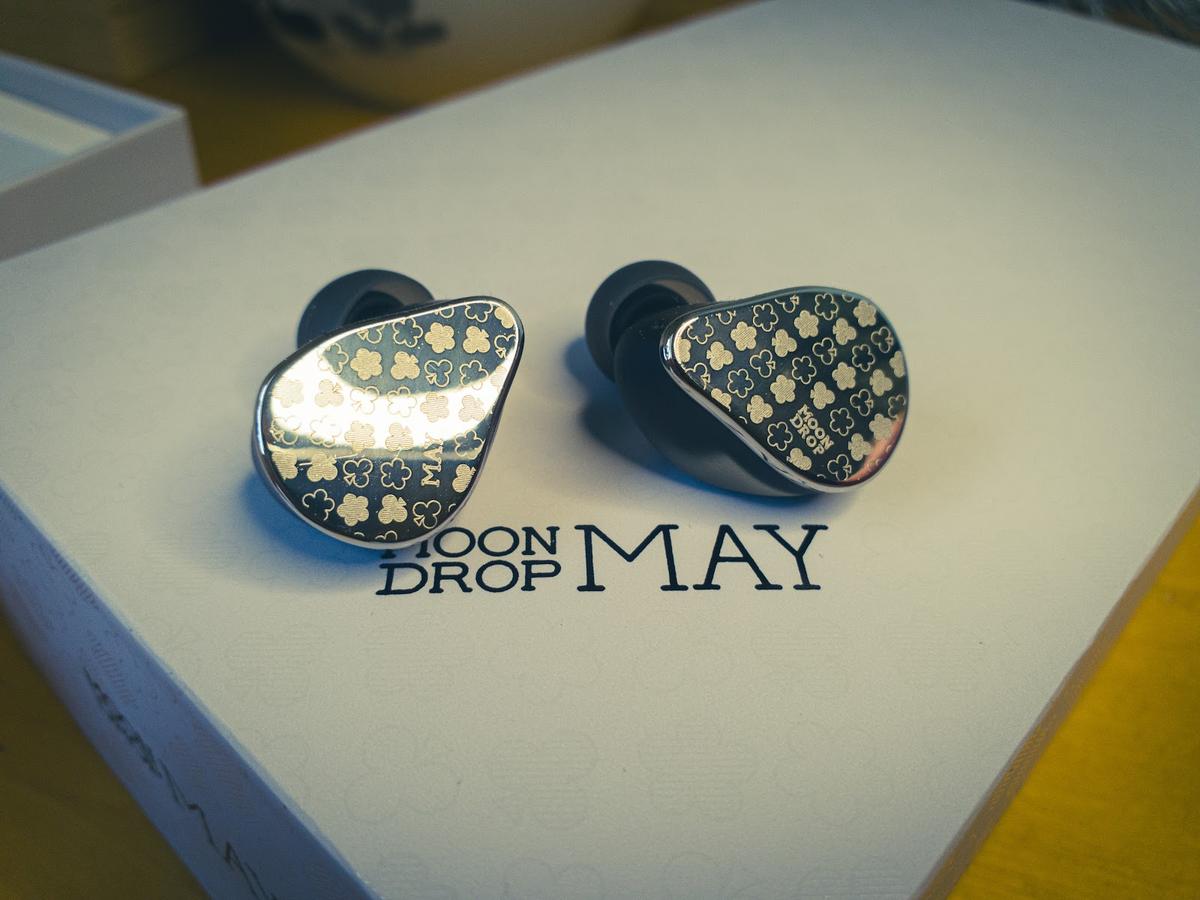
Works with an iPhone 13 (Lighting) via dongle?
Hey! It uses a regular USB OTG protocol, so in theory it should work. In practice… I wasn’t able to check as all of my Apple stuff uses the old connector.